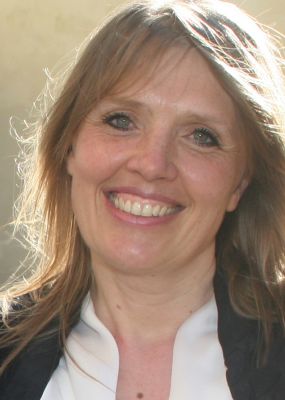Bioactive coatings and cements as biomedical materials for orthopaedic and dental surgical implant applications

Julietta V. Rau (Dr, PhD) is currently Researcher, Head of the laboratory and research group at the Institute of the Structure of Matter of the Italian National Research Council (ISM-CNR, Rome, Italy). She is the author of more than 135 publications in International Journals and about 155 presentations and Invited talks at International Conferences. She received several international awards for her research achievements. Her present H-index is 26 (Google Scholar).
She is the CHAIR and organizer of the biennial BioMaH “Biomaterials for Healthcare” International Conference (https://biomah.ism.cnr.it) and the Member of the International Scientific Committees of various International Conferences in the field of Materials Science, Nanoscience, Biomaterials and Medical devices.
She is Associate Editor of the Bioactive Materials journal and the Member of the Editorial Boards of Nature Scientific Reports, EC Orthopaedics, Journal of Advanced Drug Delivery Research –MEDCRAVE publishing, and Journal of Tissue Engineering and Regenerative Medicine and Bioactive Materials (Fronties).
She is the Reviewer at several international journals and Lead Guest Editor of the Special Issue «Bioactive ceramic and glass systems for bone tissue engineering» in BioMed Research International journal and of the Special Issue "Exploring challenges ahead of nanotechnology for biomedicine" in Bioactive Materials journal.
Her present research interests regard innovative biomaterials for regenerative medicine, among them calcium phosphates and glass-ceramics based materials for tissue engineering applications. Her recent publications are dedicated to bioactive nanostructured coatings of innovative composition for orthopaedic and dental implant applications and cements for bones, cranial-facial surgery and dentistry applications. She is also involved (Project Leader of the Raman DXR Seed Unit Program (Europe) of Thermo Fisher Scientific Company (2016)) and interested in research projects dedicated to Raman spectroscopy applications in biomedicine and novel imaging approaches for cancer diagnostics.
Julietta V. Rau
Istituto di Struttura della Materia, Consiglio Nazionale delle Ricerche, Rome, Italy
Biomaterials are materials projected to interact with biological organisms, their interaction being a focus point of multidisciplinary research. The appropriate design of biomaterials for implants is a key factor for their long term stability. Due to the trend in demographics towards older population, there is currently a dramatic increase in the use of implants, but along with the benefits there is a high probability risk of infections caused by bacteria that attach to the implant surface and often form biofilms. According to clinicians, approximately 50% of implants fail during the first 5 years after implantation due to bacterial infection possibly acquired during surgery. For this reason, a special focus in the field of biomaterial science is dedicated to the design of new biomaterials with antibacterial and other functional properties. The application of Titanium (Ti) and its alloys as biomedical implants has dramatically increased in the last years due to their excellent biocompatibility, corrosion resistant and outstanding mechanical characteristics. To improve their performance, the Ti implants are coated with materials releasing Cu2+, Zn2+ or Ag+ ions, with the scope to assure antibacterial characteristics and provide better long-term reliability. As promising biodegradable implant materials, Magnesium (Mg) alloys are studied in this work. However, their fast corrosion is a problematic issue. The properties of Mg alloys can be improved by applying protective coatings to control the degradation. In this study, bioactive glass and calcium phosphate coatings are studied as coating materials. Ion substituted calcium phosphate cements are also investigated in this work. They can endow cements with a broad range of specific functional properties, from antibacterial to magnetic one. Here the recent results obtained for several novel compositions of ion substituted calcium phosphate cements will be reported. In vitro bioactivity and cell tests results will be demonstrated. Present study suggests that novel nanostructured materials can be particularly relevant for new strategies in tissue replacement and regeneration, ensuring required structural, chemical, morphological and mechanical properties, improving osseointegration of dental and orthopaedic medical implants and providing a controlled release of active principles.






